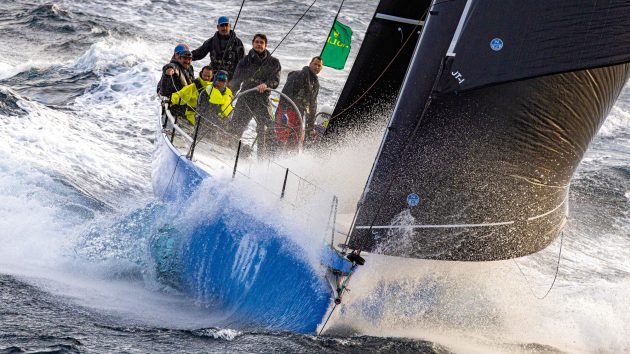Successful skipper and adventurer, Conrad Humphreys, explains his top crew morale building tips to Andy Rice
Leading a crew of amateur sailors around the world in an event like the BT Global Challenge, or its modern equivalent, the Clipper Race, can be challenging in the extreme. That said, Conrad Humphreys says that many of the fee-paying amateurs he skippered displayed a more professional attitude than some professional sailors he’s encountered in later years. Whatever the depths of experience in your crew, building a cohesive, tightly-knit team is vital for making sure you’re ready for when adversity strikes.
In 2016 Humphreys’ leadership skills were challenged to new levels when he was appointed to the role of sailing master for Mutiny, Channel 4’s televised recreation of the 4,000-mile voyage from Tonga to Timor in a 23ft open boat undertaken by Captain Bligh and a crew of 18 sailors.
With some difficult characters in the crew, some of whom had no sailing experience and were more focused on building their TV profile, Humphreys had to find new ways of motivating his fellow sailors. With daily rations running low and the crew losing on average around 25% of body weight, maintaining morale was extremely difficult. Here are Humphreys’ five best tips for building a cohesive team that will weather the storm together.
Share the load
Being a skipper of a race boat can be a lonely business. As the only person standing on top of the pyramid, who do you look to when you need support? Part of the reason we won the BT Global Challenge was because we identified early in the campaign that we needed more leaders on board, people who could step up and, if necessary, lead without authority.
By flattening the leadership structure, creating a co-skipper role to help drive performance and by selecting watch leaders who were very good at running teams, it took the pressure off my shoulders and created a sense of collective responsibility. These people were not necessarily the most experienced sailors, but they displayed an ability to inspire the rest of the team to commit to the hard decisions required to win the race.

Conrad on the helm during Mutiny
When to follow
Whatever your job on board, you need to support your leader through thick and thin. Often in top-end campaigns like the America’s Cup there can be a lot of ego that, if not managed correctly, can be corrosive. Good leaders know how to put aside their personal agenda and to follow others when the team effort requires it.
This makes ‘followship’ as vital as leadership, and it’s where having a good second-in-command really comes into their own. Typically they might be a watch leader, very capable of running the ship in their own right, but also supportive and sometimes protective of the leader.
Lead with compassion
A lot is said about compassion and purpose at the moment, but they’re two words that 20 years ago probably wouldn’t have been associated with leadership. Leaders like the Dalai Lama or Gandhi famously showed a huge amount of compassion but it’s not something we’ve seen so much in sport. Compassion was not in Captain Bligh’s vocabulary and that was partly what led to his problems on the Bounty.
Grant Dalton is someone who is known for being quite tough, but he can be on your side as well. Dalton is also one of those leaders who is good at enabling people on the team to have influence without authority. That is a huge skill, to be able to lead others when you don’t have the badge or the title of authority. Leading by example, leading with compassion, is often more powerful than ruling with a rod of iron.

Grant Dalton is a tough but good leader. Photo Ricardo Pinto
Celebrate your wins
By definition, your greatest improvements will come from your greatest weaknesses. But this makes it easy to overlook the moments when you and the team have done a really good job. Make time to celebrate the wins, give the team and yourself a pat on the back when you’ve executed a good manoeuvre or successfully navigated a crucial part of the race with good seamanship and strategy.
Equally, it’s important not to beat yourself up too hard or for too long about your mistakes and misfortunes. In the darker moments it’s how quickly and strongly you bounce back from adversity that defines a successful sailor.
A sense of purpose
When you’re in the thick of a crisis, maybe a 60-knot storm or even just locked in a battle with another boat next to you, it can be easy to lose focus on the main goal. If you set out in a small open boat to navigate 4,000 miles, most people would give up before leaving the safety of the harbour.
When conflict occurs, as it inevitably will, you need to remind people why they signed up in the first place. Ask your team what it will feel like to complete the race and involve them in your strategic thinking. If your team feels the success of the trip is down to them, they’ll be far more likely to stick with you. ‘Tell me and I forget. Show me and I may remember. Involve me and I learn,’ is a good motto to remember.
 If you enjoyed this….
If you enjoyed this….
Yachting World is the world’s leading magazine for bluewater cruisers and offshore sailors. Every month we have inspirational adventures and practical features to help you realise your sailing dreams.Build your knowledge with a subscription delivered to your door. See our latest offers and save at least 30% off the cover price.





